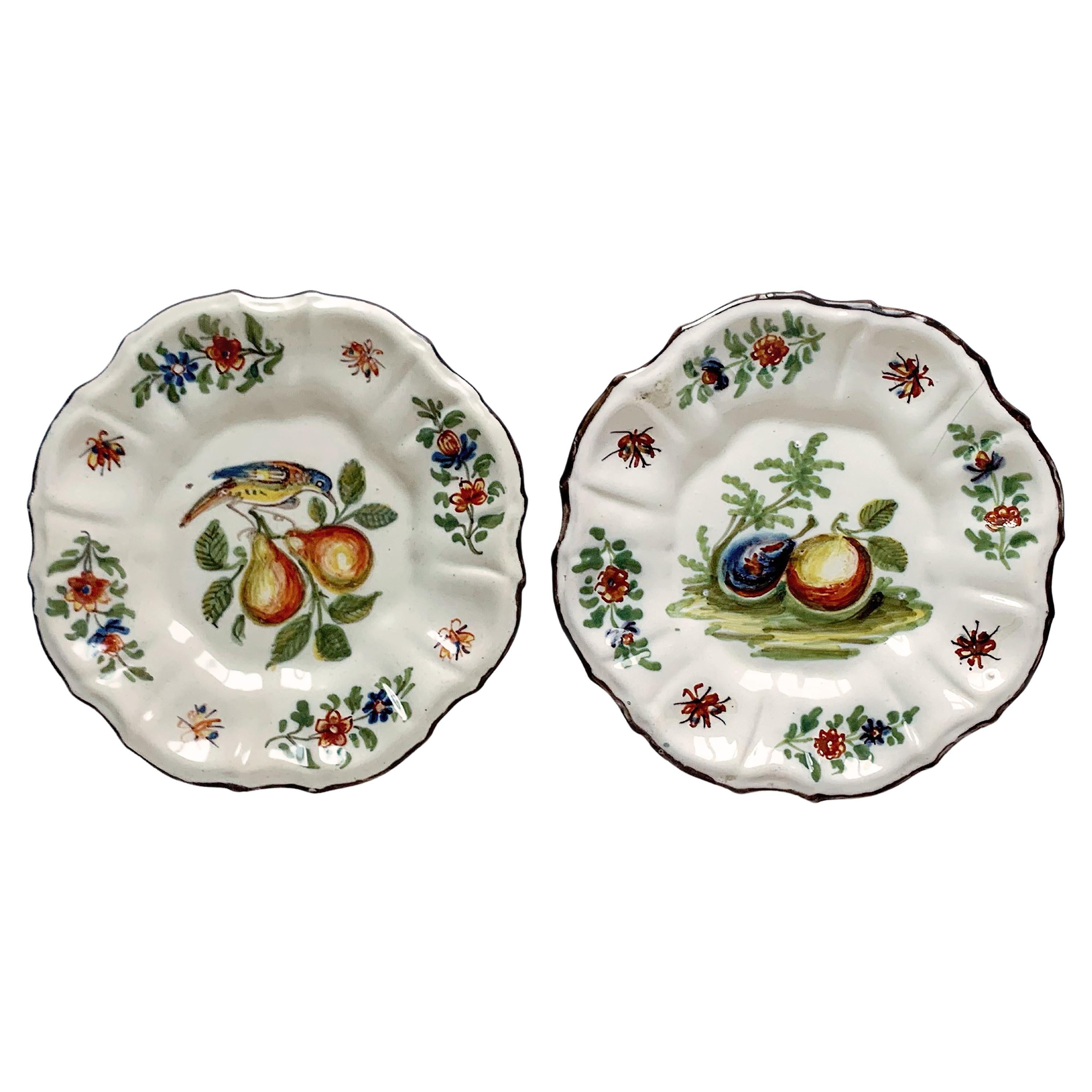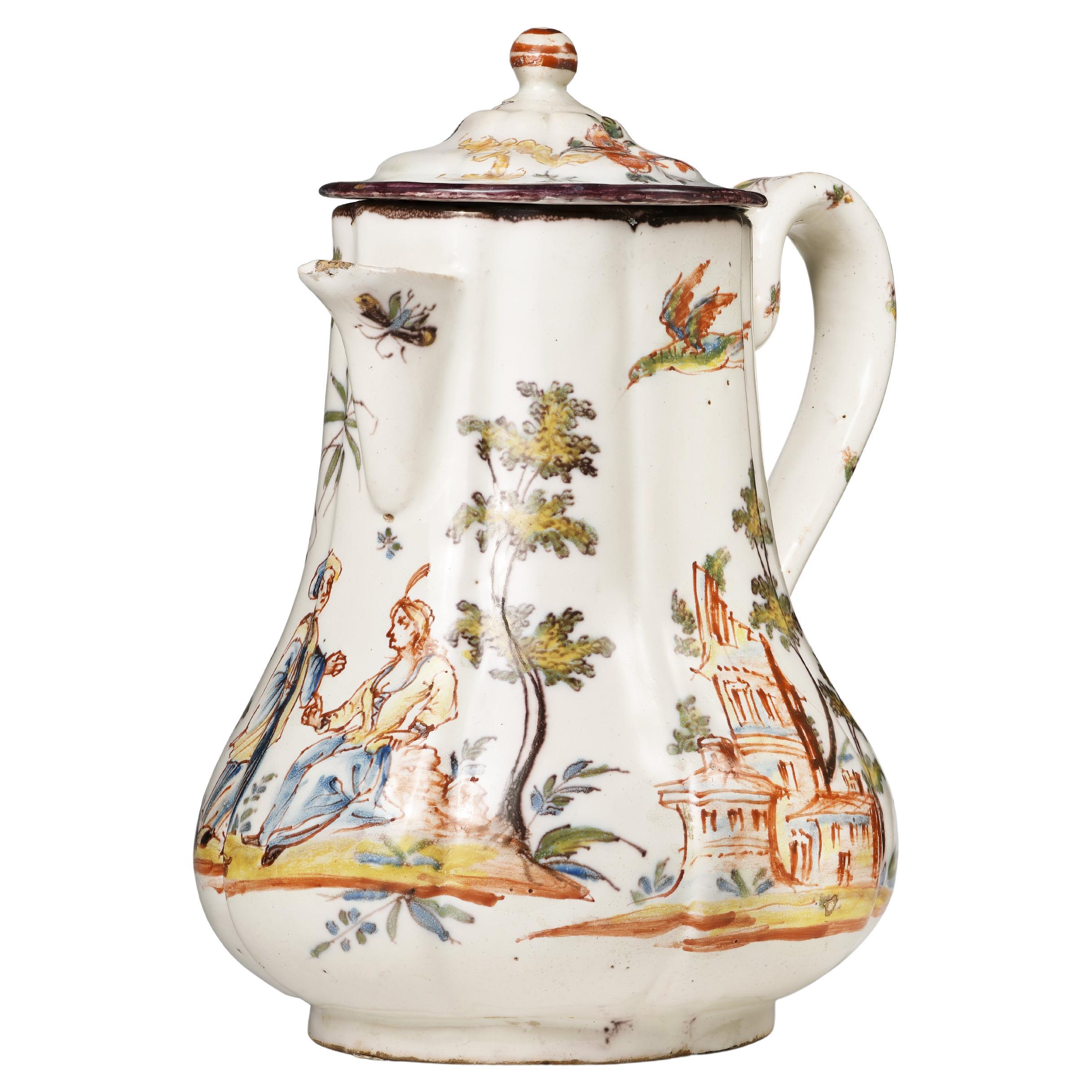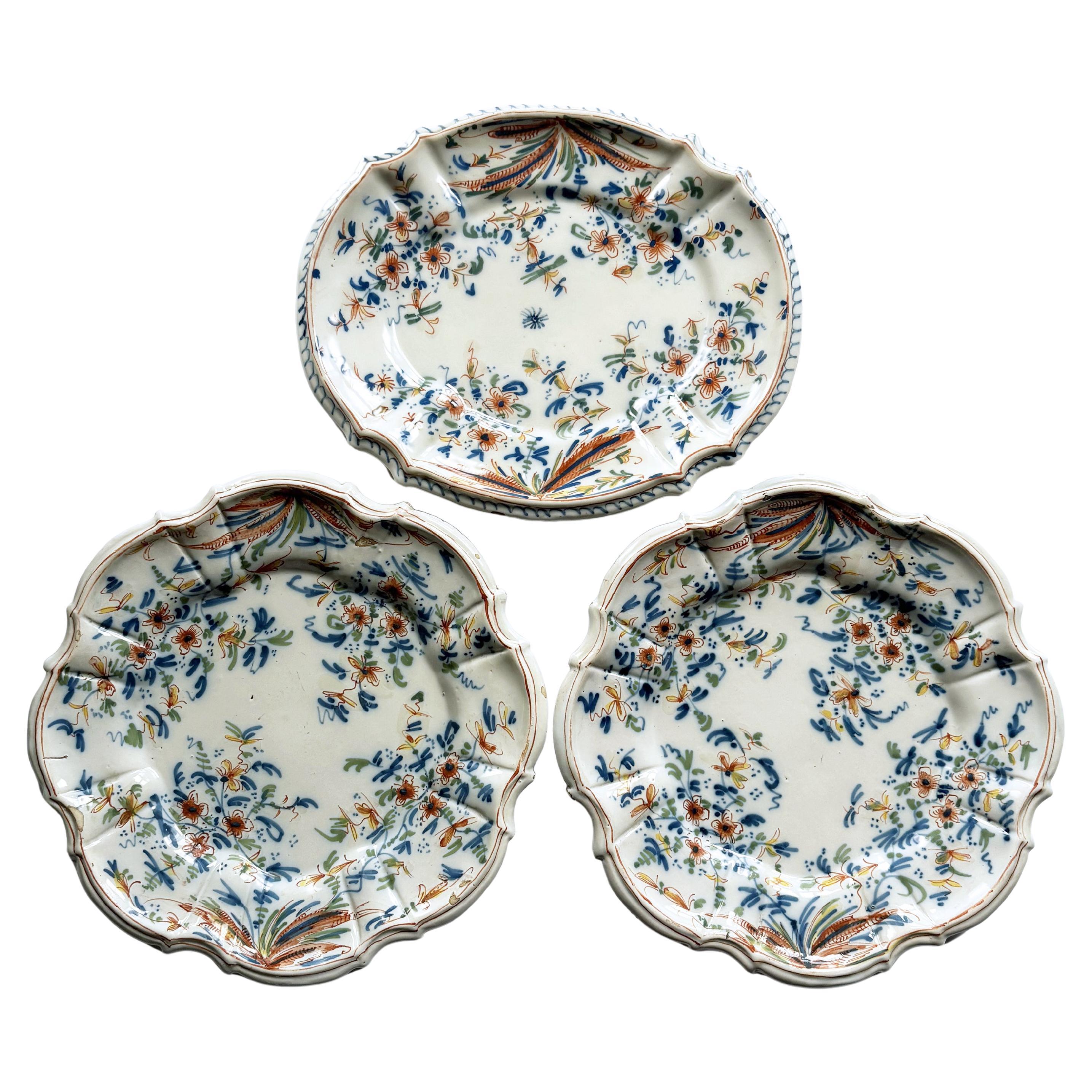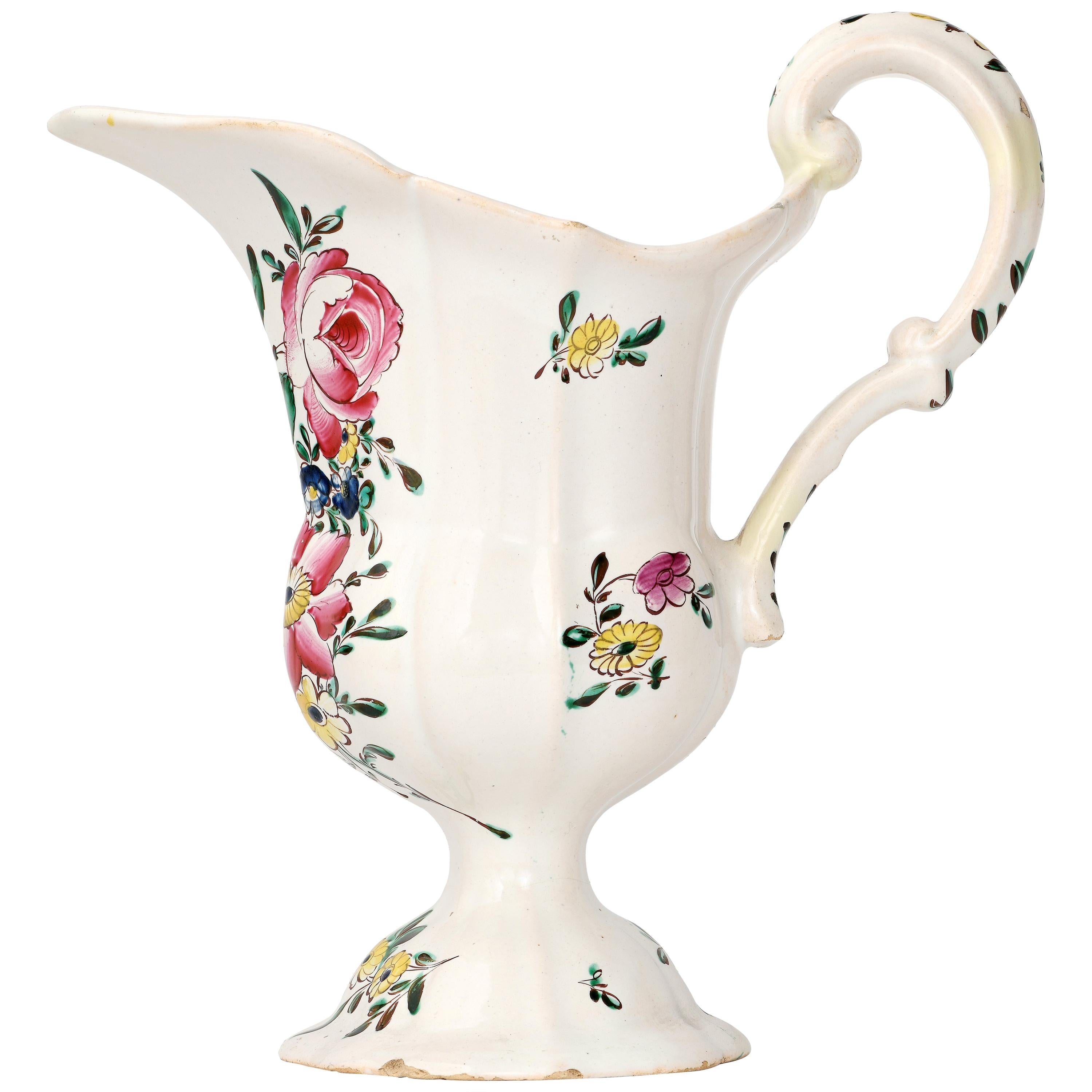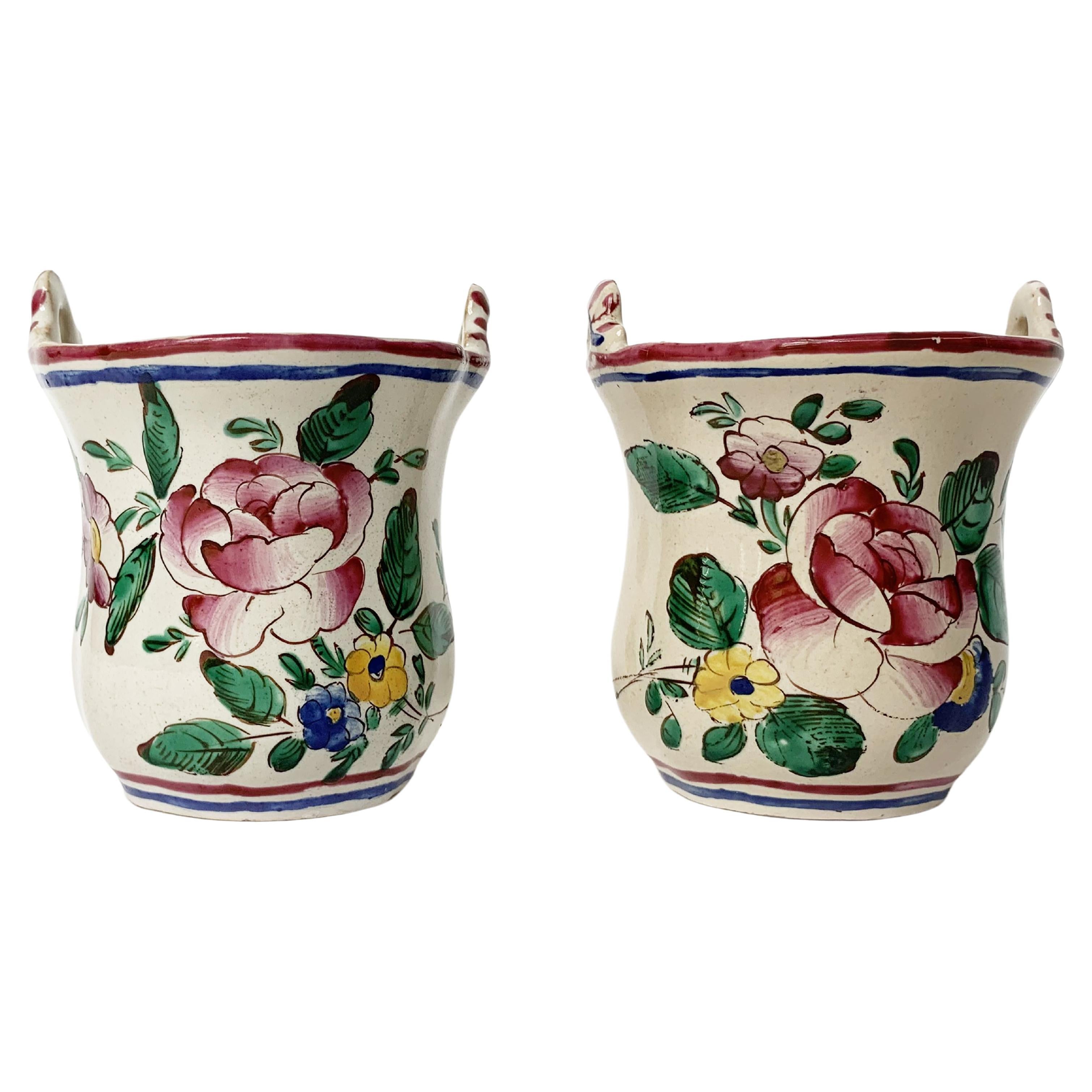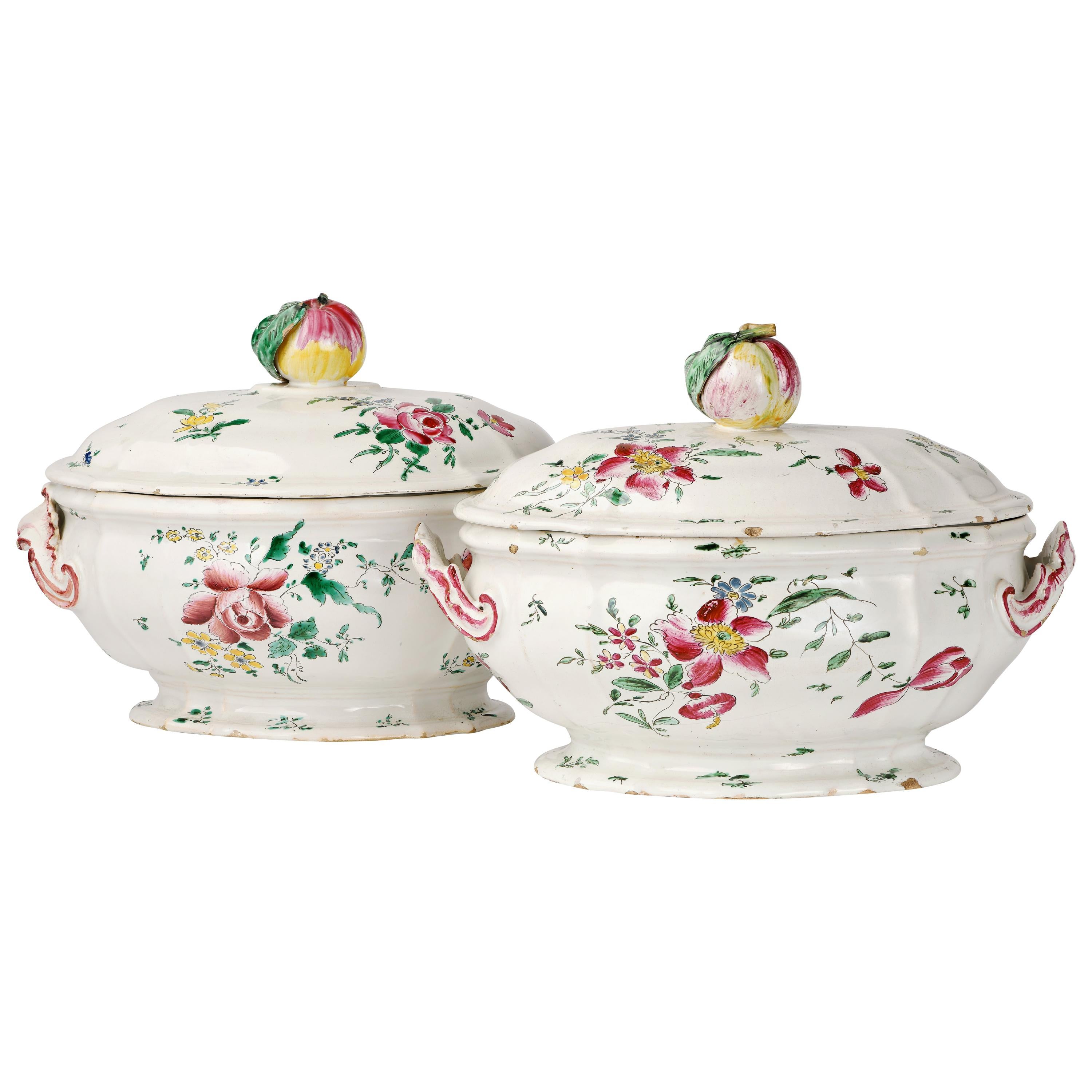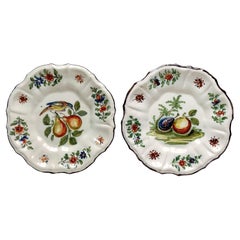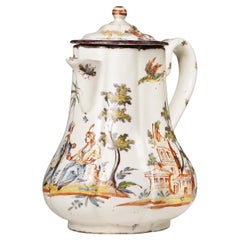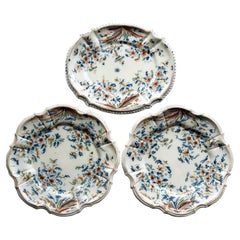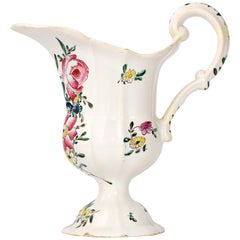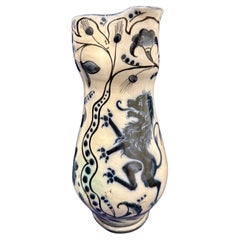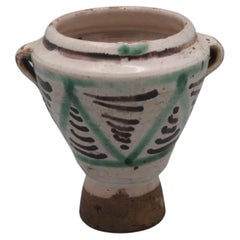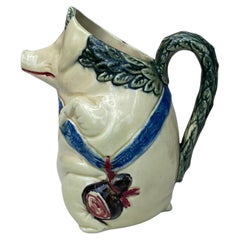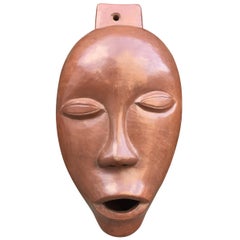Articoli simili a Maiolica Pitcher Antonio Maria Coppellotti Manufacture, Lodi, Circa 1735
Caricamento del video
Vuoi altre immagini o video?
Richiedi altre immagini o video al venditore
1 di 21
Maiolica Pitcher Antonio Maria Coppellotti Manufacture, Lodi, Circa 1735
Informazioni sull’articolo
Maiolica pitcher
Antonio Maria Coppellotti Manufacture
Lodi, circa 1735
Maiolica decorated in cobalt blue monochrome
It measures 7.36 in hight x 8.07 x 4.52 (h 18,7 cm x 20,5 x 11,5)
Weight: 0.859 lb (390 g)
State of conservation: intact, apart from a slight chip on the tip of the spout due to use.
The maiolica pitcher has a mouth with a long triangular spout and a contoured, slightly flared rim that rises at the back where the handle is attached. The latter is carried high and consists of a flat-sectioned ridge that, from the attachment to the rim, traces a descending 'S' ending with a slight protrusion. The smooth and cylindrical vessel widens at the base to form a slightly lobed, rounded chalice, then it narrows into a stem and expands into a broad, ribbed, slightly flared, contoured foot with a concave base.
The surface is covered with a thick white glaze; the artistry of the painting is quick but precise and does not skimp on the use of the precious blue pigment. The decoration covers the entire surface, including the inner rim. On the front it features a flower with wide petals accompanied by a phytomorphic decoration that radiates with dense geometric arabesques, following the principles of the so-called “a merletto” decoration inspired by the contemporary French decoration lambrequins et rayonnants or the Rouen style. The decoration interrupts at the cup, which is adorned with oval-shaped lobes, then resumes in the same manner on the foot, as in the Rouen style.
This pitcher accompanied the equipment of a complex eighteenth-century table setting and in theory functioned as a vessel for pouring liquids: It was coupled with a tub for washing hands, and was for pouring wine into glasses, not at the table, but rather with each glass poured and offered by dedicated waiters to each diner.
The small number of consistent works in terms of morphology, dimensions, and decoration, found in private collections, confirms the attribution of the small pitcher in question to the Lodi manufacture of Antonio Maria Coppellotti in its early phase around 1735-1740. See the two spouts or pitchers presented at the Lodi maiolica exhibition (M. L. Gelmini, in Maioliche lodigiane del '700, cat. mostra di Lodi, Milano 1995, pp. 76-77, nn 39-40) and the pouring spout, previously part of the Robiati collection, exhibited at the Poldi Pezzoli in 1964. (G. Gregorietti, Museo Poldi Pezzoli, Maioliche di Lodi, Milano e Pavia, Milano 1964, n. 32). A particularly similar work is preserved in a private collection in Lodi. (F. Ferrari, La ceramica di Lodi, Lodi 2003, p. 94, n. 4). The use of this same mold is also derived from jugs that bear different decorations, such as, for example, the two pitchers with 'fruit' decorations (Gelmini, op. cit., pp. 118-119, nos. 113-114), confirming the success of this form in the Coppellotti manufacture as documented in 1750.
Other published examples document the use of different molds in the manufacture, as evidenced by the morphology of other specimens that differ both in size and in the different characteristics of the vessel's shape, foot, or handle applied in a raw state. The execution of the decoration, similar to ours in design, remains different due to the different personalities of the painters themselves.
The examined work stands out from comparisons due to an intriguing distinctive characteristic of the form that, during the drying phase from the raw state, underwent a slight and unusual compression on the neck of the foot caused by the weight of the vessel: this 'defect' did not prevent, even in ancient times, the piece from leaving the manufacture, as it was not considered detrimental to the quality of the work. Indeed, this piece has come down to us with all its simple beauty still intact.
The first mention of the Coppellotti family as potters comes from archival documents which record the official request of an unknown Giovanni Coppellotti to open a majolica factory in Lodi in 1674.
The factory, located near the church of St. Philip seems to have been immediately quite successful. However, it was only in 1679, when the management of the factory passed to Antonio Giovanni Maria Coppellotti – the son or perhaps grandson of the original Giovanni - that the production reached the peak of success and became an example for the main Italian manufactures of the time, especially those in Veneto and Liguria. In 1728 the factory had to move outside the city walls at the behest of the authorities, who feared the possibility of fires.
The activity continued until about 1750, the year of Anton Maria's death and resumed later with his son, Bassano Coppellotti, under the guide of some other directors, among whom we note: first, G. Moroni, followed by Giulio Berinzaghi and in 1771 Pedrinazzi. Finally, in 1787 a new municipal ordinance ordered the definitive closure of the manufactory.
The maiolica produced during the initial period are characterized by the use of a thick, velvety enamel and have ornaments ranging from monochrome turquoise with Italian (ruins, castles, flowers) and French motifs ("rabeschi", ramage), to decorations in the manner of Chinese porcelain and oriental inspiration.
Of particular importance are ornaments of Baroque fruit which show the amazing relief effects produced by using the red tone called "Armenian bolus". This great variety of decorations appeared between 1735 and 1740 by which time, alongside the production of turquoise monochrome, polychromy with high fire technique was firmly established.
Bibliography:
C. Baroni, Storia delle ceramiche nel Lodigiano, in Archivio storico per la città e i comuni del circondario e della diocesi di Lodi, XXXIV (1915), pp. 118, 124, 142; XXXV (1916), pp. 5-8;
A. Novasconi - S. Ferrari - S. Corvi, La ceramica lodigiana, Lodi 1964, ad Indicem; Maioliche di Lodi, Milano e Pavia (cat.), Milano 1964;
G. Gregorietti Museo Poldi Pezzoli, Maioliche di Lodi, Milano e Pavia (cat.), Milano 1964, n. 32;
M. L. Gelmini, in Maioliche lodigiane del '700 (cat. mostra Lodi), Milano 1995, pp 76-77, nn. 39-40;
R. Ausenda (a cura di), Musei e Gallerie di Milano. Museo d’Arti Applicate. Le ceramiche. Tomo secondo, Milano 2000, pp. 213-220;
F. Ferrari, La ceramica di Lodi, Lodi 2003, p. 94, n.4.
- Attribuito a:Antonio Maria Coppellotti (Fabbricante)
- Dimensioni:Altezza: 18 cm (7,09 in)Larghezza: 20,5 cm (8,08 in)Profondità: 11,5 cm (4,53 in)
- Stile:Barocco (Del periodo)
- Materiali e tecniche:
- Luogo di origine:
- Periodo:1730-1739
- Data di produzione:Circa 1735
- Condizioni:Usura compatibile con l’età e l’utilizzo. Intact, apart from a slight chip on the tip of the spout due to use.
- Località del venditore:Milano, IT
- Numero di riferimento:1stDibs: LU4352238828342
Informazioni sul venditore
4,3
Venditore professionale selezionato
Ogni venditore supera rigorosi standard di autenticità e affidabilità
Fondazione nel 1860
Venditore 1stDibs dal 2018
21 vendite su 1stDibs
Associazioni
International Confederation of Art and Antique Dealers' Associations
- SpedizioneRecupero del preventivo…Spedizione da: Milano, Italia
- Politica di reso
Alcune parti di questa pagina sono state tradotte automaticamente. 1stDibs non può garantire che le traduzioni siano corrette. L’inglese è la lingua predefinita del sito.
Garanzia di autenticità
Nell’improbabile caso in cui si verifichi un problema con l’autenticità di un articolo, contattaci entro un anno per ottenere un rimborso completo. DettagliGaranzia di rimborso
Se il tuo articolo non corrisponde alla descrizione, è danneggiato durante il trasporto o non arriva, contattaci entro 7 giorni per un rimborso completo. DettagliAnnullamento entro 24 ore
Hai un periodo di tolleranza di 24 ore per annullare il tuo acquisto, senza necessità di fornire spiegazioni.Venditori professionali selezionati
I nostri venditori di livello internazionale devono aderire a rigorosi standard di servizio e qualità, garantendo l’integrità delle inserzioni.Garanzia miglior prezzo
Se scopri che un venditore ha pubblicato altrove lo stesso articolo a un prezzo più basso, applicheremo lo stesso prezzo.Consegna globale affidabile
La nostra rete di vettori leader del settore offre opzioni di spedizione specializzate in tutto il mondo, inclusa la consegna personalizzata.Altro da questo venditore
Mostra tuttoTwo Small Italian Dishes Antonio Maria Coppellotti Manufacture, Lodi, Circa 1740
Di Antonio Maria Coppellotti
Two small dishes
Antonio Maria Coppellotti Manufacture
Lodi, Circa 1740
High fire polychrome maiolica
They measure: diameter 7.08 in(18 cm)
Weight: 0.37 lb (170 g)
State of conservat...
Categoria
Di antiquariato/d’epoca, 1740s, Italian, Barocco, Ceramiche
Materiali
Maiolica
Antica caffettiera italiana, manifattura Coppellotti, Lodi, circa 1740
Di Antonio Maria Coppellotti
Caffettiera
Antonio Maria Coppellotti Fabbricazione
Lodi, 1740 circa
Maiolica policroma a gran fuoco
Misura: 7.87 in x 6,49 x 5.11 (20 cm x 16,5 x 13); peso 1.23 lb (561 g)
St...
Categoria
Di antiquariato/d’epoca, Anni 1730, Italiano, Rococò, Ceramiche
Materiali
Maiolica
Three Dishes, Antonio Maria Coppellotti Factory, Lodi, Italy, Circa 1745
Di Antonio Maria Coppellotti
Pair of round dishes and a small oval tray
Antonio Maria Coppellotti factory
Lodi, circa 1745
High fire polychrome maiolica
Dishes size: diameter 9.44 in, height 0.78 in (24 cm, 2 c...
Categoria
Di antiquariato/d’epoca, 1740s, Italian, Rococò, Delft e Faïence
Materiali
Maiolica
Brocca in maiolica italiana, manifattura Ferretti, Lodi CIRCA 1770 - 1780
Di Antonio Ferretti
Brocca in maiolica
Antonio Ferretti Produzione
Lodi, circa 1770-1780
Maiolica policroma decorata "a piccolo fuoco".
Misura 8,66 x 8,66 x 4,33 pollici (22 x 22 x 11 cm).
Peso: 1,...
Categoria
Di antiquariato/d’epoca, Anni 1770, Italiano, Rococò, Ceramiche
Materiali
Maiolica
Piccoli vasi da fiori in maiolica, Manifattura Ferretti, Lodi, circa 1770-1780
Di Antonio Ferretti
Due vasi da fiori in maiolica
Antonio Ferretti Produzione
Lodi, circa 1770 - 1780
Maiolica policroma decorata "a piccolo fuoco" (terzo fuoco)
Misurano 3.46 x 3.14 x 2,67 pollici ...
Categoria
Di antiquariato/d’epoca, Anni 1770, Italiano, Rococò, Ceramiche
Materiali
Maiolica
Coppia di zuppiere in maiolica italiana, manifattura Ferretti, Lodi CIRCA 1770 - 1780
Di Antonio Ferretti
Coppia di zuppiere in maiolica
Antonio Ferretti Produzione
Lodi, circa 1770-1780
Maiolica policroma decorata "a piccolo fuoco".
a - 8,66 x 11,02 x 7,48 pollici (22 x 28 x 19 cm) ...
Categoria
Di antiquariato/d’epoca, Anni 1770, Italiano, Rococò, Ceramiche
Materiali
Maiolica
Ti potrebbe interessare anche
Brocca in maiolica italiana con leone rampante, centro Italia, 1850 ca.
Brocca in maiolica italiana con leone rampante, Italia centrale, 1850 ca.
Questa brocca in maiolica non marcata con sfondo bianco crema è decorata sul davanti con un leone rampante ...
Categoria
Di antiquariato/d’epoca, Metà XIX secolo, Italiano, Neorinascimentale, C...
Materiali
Maiolica
Teruel (Aragona) - Mortaio spagnolo in maiolica, XVII secolo
Mortaio in ceramica prodotto nei laboratori di ceramica di Teruel nel XVII secolo.
Ha una forma tronco-conica con tre manici e un versatore. È smaltato a stagno in un bianco lattigin...
Categoria
Di antiquariato/d’epoca, XVII secolo, Spagnolo, Barocco, Ceramiche
Materiali
Maiolica
Brocca per maiale in maiolica Orchies, 1900 circa
Di Orchies
Maiale francese in maiolica con prosciutto firmato Orchies, circa 1900.
Categoria
Di antiquariato/d’epoca, Inizio Novecento, Francese, Stile provenzale, B...
Materiali
Majolica, Ceramica
Maschera in terracotta smaltata di Antonio Lampecco, 1960 circa
Di Antonio Lampecco
Antonio Lampecco (1932-) maschera in terracotta smaltata, 1960 circa.
Categoria
Vintage, Anni 1960, Europeo, Mid-Century moderno, Ceramiche
Materiali
Terracotta
Brocca per asparagi in maiolica francese, circa 1930
Brocca per asparagi in maiolica francese, circa 1930.
Categoria
Vintage, Anni 1930, Francese, Rustico, Brocche
Materiali
Ceramica
Brocca per cani in maiolica francese, 1900 circa
Brocca per cani in maiolica francese, circa 1900.
Cane bianco e marrone con fiocco blu.
Categoria
Di antiquariato/d’epoca, Inizio Novecento, Francese, Stile provenzale, B...
Materiali
Ceramica
